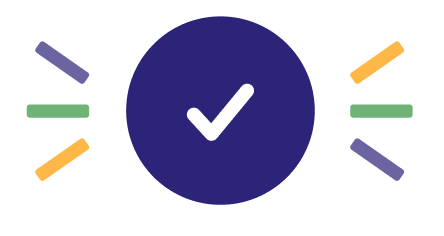Learn with the Plynk app
Gain confidence in your investing knowledge and explore the basics at your own pace.

Grow your market smarts
What are ETFs?
Learn how ETFs (exchange traded funds) work and what to know about them before investing.
Read more
How to set up a watchlist
Build a watchlist in the Plynk app to keep track of stocks and funds you may be interested in.
Read more
What are dividends?
Dividends are a way you can receive income from your investments without having to sell them.
Read more
Let's keep exploring

AI-powered news summaries in the Plynk app
Explore insights based on your portfolio, watchlist, or top-moving stocks, right on the app home screen.
Read more about AI powered summaries
How the Plynk app keeps your money and information safe — Q&A with the security team
Answers to some common safety and security FAQs that every Plynk user should want to know.
Read more about safety and security
What is micro-investing?
How investing $1 can help build long-term habits for your financial future.
Read more about micro-investing
Build a new investing habit with Steady Start
A 52-week journey that can help you start small and eventually invest nearly $1,400.
Read more about steady start
Simulated trading with the Plynk app
A way to practice investing and build your confidence without risking real money.
Read more about simulated trading
What are stop orders?
Learn how stop orders work and when you might want to use them.
Read more about stop orders.How to set up a virtual portfolio
Virtual portfolios let you see how combinations of investments would’ve performed from a certain point in time until now.
Read more about how to set up virtual portfolios.
3 steps for veterans to prepare for investing
Plan ahead, set your goals, and know your options.
Read more about how veterans prepare to invest.What is dividend yield and what does it mean to reinvest dividends?
We explain dividend yield and dividend reinvestment, plus how you can use the Plynk app to find stocks that pay dividends.
Read more about stocks—what are they and why would I invest in them?
The Plynk Investing Dollar Store
To help spread the word that our app provides a refreshingly easy way to invest with as little as $1, we created the Plynk Investing Dollar Store.
Read more about the Plynk Dollar Store
Reduce risk with dollar cost averaging
Investing money in a stock or fund systematically instead of all at once can help smooth out your purchase price.
Read more about dollar cost averaging.Is a Roth IRA right for you?
We explain how IRAs work and discuss some of the benefits of a Roth IRA.
Read more Is a Roth IRA right for you?
4 money must-knows for 2023
Investing tips to consider with high interest rates, inflation, and an uncertain financial outlook.
Read more 4 money must-knows for 2023How to use expert ratings
The Plynk app provides expert ratings of stocks and funds to help inform your investment choices.
Read more expert ratings
How to set up recurring deposits
Learn how to schedule automatic deposits to your brokerage account.
Read more about How to set up recurring depositsChoosing a market order or a limit order
We explain the difference between two ways to trade stocks and funds, plus how to do it in the Plynk app.
Read more about market orders and limit orders
3 ways to find money to invest
Looking to uncover extra money in your budget for investing? Try exchanging old gift cards, taking a closer look at your monthly expenses, and putting your tax refunds to use.
Read more about 4 creative ways to find money to investHow to invest based on your interests
The Plynk app lets you search for investments by themes that may appeal to you.
Read more about how to invest based on your interests
Bulls, bears, and time in the market vs timing the market
It can be helpful to know what happens when stock prices rise and fall and how to think about investing through it all.
Read more about bear and bull market marketsAll about funds: Comparing ETFs and mutual funds
Exchange-traded funds and mutual funds may sound similar, but they have some key differences.
Read more about 5 steps to invest with Plynk
How to make your money work for you with compound growth
Take advantage of compound growth by investing your money in the stock market.
Read more about how to make your money work for you3 smart investing habits
Practicing good habits from the get-go will help set you on the right path.
Read more about 3 smart investing habits
Get to know your investing fees
The Plynk team is committed to full transparency about what fees you pay (and better yet, what fees you don’t pay).
Read more investing-feesMaking a plan to sell
Without a plan it can be hard to know when to sell stocks and other investments. Learn how to make an exit strategy.
Read more Making plan to sell
Building your own investing strategy
An investing strategy is a plan that outlines how you intend to reach your investing goals.
Read more about 5 steps to invest with PlynkStart investing with as little as $1
Now you don’t need to have hundreds of dollars to own a slice of your favorite company.
Read more about how to start investing with as little as $1
What are index funds?
Index funds can be a simple and low-cost way to help diversify your investments.
Read more diversifying with index fundsHow to measure investment performance
The Plynk app makes it easy to know how your investments are doing. Learn two simple ways to assess the growth of your investments in the app.
Read more measuring-investment-performance
Paying taxes on your investments
Learn how capital gains taxes work and why holding onto an investment for more than a year could lower your tax bill.
Read more about paying taxes on your investmentsHow to keep your cool during market uncertainty
Learn how to avoid making emotional decisions when markets get choppy.
Read more about how to keep your cool during market uncertainty
3 tips to start investing in 2024
Make this the year you stick with your goal and put your money to work for the future.
Read more about 3 tips to start investing in 2024
5 steps to make your first investment
How to make a trade in just a few simple steps with the Plynk app.
Read more about 5 steps to invest with PlynkHow to invest for a big goal
Knowing what you’re investing for is the first step. What’s next? Understanding your time horizon and comfort with risk.
Read more about how to invest for a big goal
Invest vs trade: What type of investor are you?
There are 2 key ways to invest money in the stock market based on how often you do it and what you want to get out of it.
Read more about what type of investor are you?Let’s talk stocks—what are they and why would I invest in them?
Explore what it means to own stock in a company, and how to get started buying it.
Read more about stocks—what are they and why would I invest in them?
What are stocks, ETFs, and mutual funds?
Learn the differences between these 3 investment types and what to consider when choosing which to invest in.
Read more about what are stocks, ETFs, and mutual funds?How to set up automatic investing
Automatic investing can help you streamline your financial decision-making and put good money habits into action.
Read more about investing regularly without having to think about it
Diversification: Why it matters to you
Spreading out your money across different investments can help you reduce risk.
Read more about diversification: why it matters to youBeating inflation through investing
By investing your money over time, you can increase your “buying power” as inflation drives up prices of everyday items.
Read more about beating inflation through investing
3 reasons to start investing with the Plynk® app
Work towards your financial goals—1 step and $1 a time.
Read more about 3 reasons to invest with PlynkWhat is a 7-day yield?
We explain what a 7-day yield means for money market funds, and how it compares to an annual percentage yield (APY).
Read more about 7 day yield
